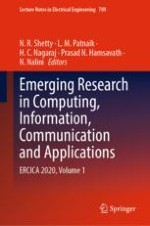2022 | Book
Emerging Research in Computing, Information, Communication and Applications
ERCICA 2020, Volume 1
Editors: Dr. N. R. Shetty, Prof. L. M. Patnaik, Prof. H. C. Nagaraj, Dr. Prasad N. Hamsavath, Dr. N. Nalini
Publisher: Springer Singapore
Book Series : Lecture Notes in Electrical Engineering
